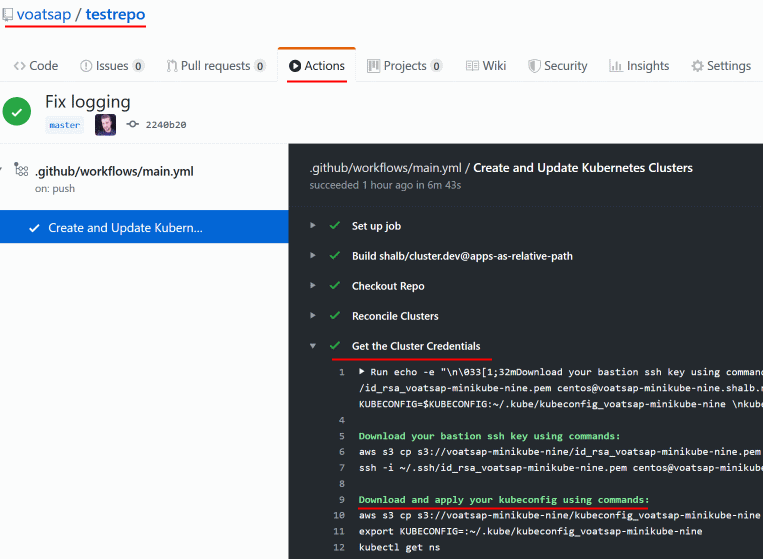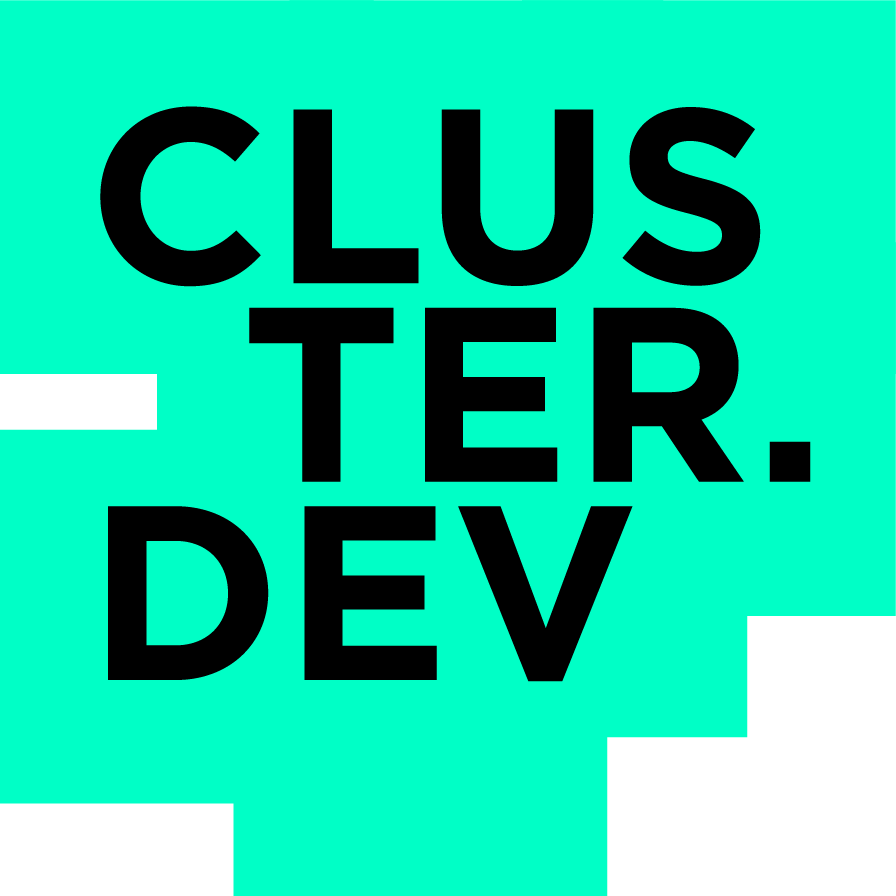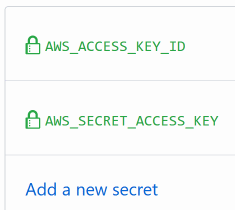shalb / Cluster.dev
Programming Languages
Labels
Projects that are alternatives of or similar to Cluster.dev
Cluster.dev - Kubernetes-based Dev Environment in Minutes
Cluster.dev is an open-source system delivered as GitHub Action or Docker Image for creating and managing Kubernetes clusters with simple manifests by GitOps approach.
Designed for developers that don't want waste time to configure Kubernetes stuff and just need: kubeconfig, dashboard, logging, monitoring and deployment systems out-of-the-box.
GitOps infrastructure management with Terraform and continuous deployment with ArgoCD. Easily extendable by pre-configured applications and modules. Quick integration with Jenkins, GitLab or other CI/CD systems. Supports multiple Cloud Providers and Kubernetes versions.
MENU
- Principle diagram
- How it works
- Installation
- Technical diagram
- Roadmap
- Contributing
- FAQ
- Code of Conduct and License
Principle diagram
Small and understandable yaml definition:
cluster:
installed: true
name: develop
cloud:
provider: aws
region: eu-central-1
vpc: default
domain: cluster.dev
provisioner:
type: minikube
instanceType: m5.large
modules:
nginx-ingress: true
cert-manager: true
apps:
- /kubernetes/apps/samples
cluster.dev turns it into powerful infrastructure as a code!
How it works
In the background:
- Terraform creates a "state bucket" in your Cloud Provider account where all infrastructure objects will be stored. Typically it is defined on Cloud Object Storage like AWS S3.
- Terraform modules create Minikube/EKS/GKE/etc.. cluster, VPC and DNS zone within your Cloud Provider.
- ArgoCD Continuous Deployment system is deployed inside Kubernetes cluster. It enables you to deploy your ArgoCD Applications from raw manifests, helm charts or kustomize yaml's.
- GitHub CI runner is deployed into your Kubernetes cluster and is used for your apps building CI pipelines with GitHub Actions.
You receive:
- Automatically generated kubeconfig, ssh-access, and ArgoCD UI URLs
- Configured: Ingress Load Balancers, Kubernetes Dashboard, Logging(ELK), Monitoring(Prometheus/Grafana)
Installation
Quick Start
normally it takes 15 minutes
-
Create a separate repository for the infrastructure code that will be managed by
cluster.devin GitHub. This repo will host code for your clusters, deployments, applications and other resources. Clone the repo locally:git clone https://github.com/YOUR-USERNAME/YOUR-REPOSITORY cd YOUR-REPOSITORY
Next steps should be done inside that repo.
Expand steps for specific for Amazon AWS
-
Create a new AWS user with limited access in IAM. Watch video example to create the user and apply policy. If you need more information about AWS users - please check aws documentation for details.
Resulting access pair should look like:
AWS_ACCESS_KEY_ID = ATIAAJSXDBUVOQ4JR AWS_SECRET_ACCESS_KEY = SuperAwsSecret
-
Add credentials to you repo Secrets under GitHub's repo setting
Settings → Secrets, the path should look likehttps://github.com/MY_USER/MY_REPO_NAME/settings/secrets: -
In your repo, create a Github workflow file: .github/workflows/main.yml and cluster.dev example manifest: .cluster.dev/aws-minikube.yaml with the cluster definition.
Or download example files to your local repo clone using the next commands:
# Sample with Minikube cluster export RELEASE=v0.3.3 mkdir -p .github/workflows/ && wget -O .github/workflows/main.yml "https://raw.githubusercontent.com/shalb/cluster.dev/${RELEASE}/.github/workflows/aws.yml" mkdir -p .cluster.dev/ && wget -O .cluster.dev/aws-minikube.yaml "https://raw.githubusercontent.com/shalb/cluster.dev/${RELEASE}/.cluster.dev/aws-minikube.yaml"
-
In the cluster manifest (.cluster.dev/aws-minikube.yaml) you can set your own Route53 DNS zone. If you don't have any hosted public zone you can set just
domain: cluster.devand we will create it for you. Or you can create it manually with instructions from AWS Website.
Expand steps for specific for DigitalOcean
-
Login to your DO account. You can create a default VPC inside your account if you wish:
Manage->Networking->VPC-Create VPC Network. -
You need to generate DO API Token and DO Spaces keys. To generate API Token please consult DO document. It should like:
DIGITALOCEAN_TOKEN: "83e209a810b6c1da8919fe7265b9493992929b9221444449"
To generate DO Spaces secrets please consult DO document Resulting Key and Secret should look like:
SPACES_ACCESS_KEY_ID: "L2Z3UN2I4R322XX56LPM" SPACES_SECRET_ACCESS_KEY: "njVtezJ7t2ce1nlohIFwoPHHF333mmcc2"
Add TOKEN and SPACES keys to your repo secrets or env variables. In GitHub:
Settings → Secrets, the path should look like:https://github.com/MY_USER/MY_REPO_NAME/settings/secrets: -
In your repo, create a Github workflow file: .github/workflows/main.yml and cluster.dev example manifest: .cluster.dev/digitalocean-k8s.yaml with the cluster definition.
Or download example files to your local repo clone using the next commands:
# Sample with DO Managed Kubernetes Cluster export RELEASE=v0.3.3 mkdir -p .github/workflows/ && wget -O .github/workflows/main.yml "https://raw.githubusercontent.com/shalb/cluster.dev/${RELEASE}/.github/workflows/digitalocean.yml" mkdir -p .cluster.dev/ && wget -O .cluster.dev/digitalocean-k8s.yaml "https://raw.githubusercontent.com/shalb/cluster.dev/${RELEASE}/.cluster.dev/digitalocean-k8s.yaml"
-
In the cluster manifest (.cluster.dev/digitalocean-k8s.yaml) you can set your own Domain Zone. If you don't have any hosted public zone you can set just
domain: cluster.devand we will create it for you. Or you can create it manually and add to your account with instructions from DO website.
-
You can change all other parameters or leave default values in the cluster manifest. Leave the Github workflow file .github/workflows/main.yml as is.
-
Copy sample ArgoCD Applications from /kubernetes/apps/samples and Helm chart samples from /kubernetes/charts/wordpress to the same paths into your repo.
Or download application samples directly to local repo clone with commands:
export RELEASE=v0.3.3 # Create directory and place ArgoCD applications inside mkdir -p kubernetes/apps/samples && wget -O kubernetes/apps/samples/helm-all-in-app.yaml "https://raw.githubusercontent.com/shalb/cluster.dev/${RELEASE}/kubernetes/apps/samples/helm-all-in-app.yaml" wget -O kubernetes/apps/samples/helm-dependency.yaml "https://raw.githubusercontent.com/shalb/cluster.dev/${RELEASE}/kubernetes/apps/samples/helm-dependency.yaml" wget -O kubernetes/apps/samples/raw-manifest.yaml "https://raw.githubusercontent.com/shalb/cluster.dev/${RELEASE}/kubernetes/apps/samples/raw-manifest.yaml" # Download sample chart which with own values.yaml mkdir -p kubernetes/charts/wordpress && wget -O kubernetes/charts/wordpress/Chart.yaml "https://raw.githubusercontent.com/shalb/cluster.dev/${RELEASE}/kubernetes/charts/wordpress/Chart.yaml" wget -O kubernetes/charts/wordpress/requirements.yaml "https://raw.githubusercontent.com/shalb/cluster.dev/${RELEASE}/kubernetes/charts/wordpress/requirements.yaml" wget -O kubernetes/charts/wordpress/values.yaml "https://raw.githubusercontent.com/shalb/cluster.dev/${RELEASE}/kubernetes/charts/wordpress/values.yaml"
Define path to ArgoCD apps in the cluster manifest:
apps: - /kubernetes/apps/samples
-
Commit and Push files to your repo.
-
Set the cluster to
installed: true, commit, push and follow the Github Action execution status, the path should look likehttps://github.com/MY_USER/MY_REPO_NAME/actions. In the GitHub action output you'll receive access instructions to your cluster and services:
-
Voilà! You receive GitOps managed infrastructure in code. So now you can deploy applications, create more clusters, integrate with CI systems, experiment with the new features and everything else from Git without leaving your IDE.
Cleanup
To shutdown the cluster and remove all associated resources:
- Open
.cluster.dev/directory in your repo. - In each manifest set
cluster.installedtofalse - Commit and push changes
- Open Github Action output to see the removal status
After successful removal, you can safely delete cluster manifest file from .cluster.dev/ directory.
Technical diagram
Roadmap
The project is in Alpha Stage. Roadmap details: docs/ROADMAP.md
Contributing
If you want to spread the project with your own code, you could start contributing with this quick guide: docs/CONTRIBUTING.md
FAQ
Code of Conduct and License
Code of Conduct described in CODE_OF_CONDUCT.md.
Product licensed under Apache 2.0.







